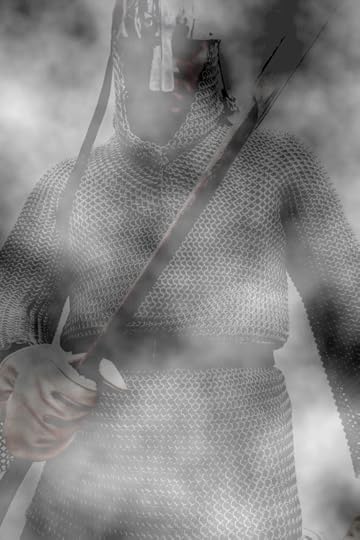The Vikings in Brittany Part 1
Introduction: As part of my efforts to educate the public about the Vikings, I thought it pertinent to do an in-depth series on the Vikings in Brittany. Brittany is a region of France which survived a violent and catastrophic period during the Viking Age from which they emerged weakened and unable to remain independent from the larger Carolingian Empire. Most of the information about the Viking Age focuses on England, but the Vikings affected the entire world. It is important to understand how they interacted with other regions and cultures to foster the most complete understanding of who they were and their intentions. Enjoy!
A skaldic verse from Egill Skallagrimson paints the picture of what once was considered the perfect Viking; created impatient from birth, presumptuous, and with a burning desire for a far-off adventure:
“My mother promised me, and soon she will buy me, a vessel and oars, to leave to distant lands with the Vikings…and to strike and fight.”
The Vikings brought the world to its knees, but the Viking Age began rather slowly. For a hunter to hunt effectively, he must first study his prey. As early as 793 and 799 C.E. Scandinavian raiders struck fast and hard in isolated areas of the known world. Following these abrupt and shocking attacks, a period of thirty or so years remained relatively calm. In Brittany, the first recorded attack saw the pillaging of the monastery of Saint Philbert on the island of Noirmoutier, but few further incursions occurred until the 830’s. Coastal defenses built by Charlemagne provided ample protection for the western Frankish Empire, but those defenses rapidly waned under the poor leadership of Louis the Pious. What the Franks failed to realize was that a new threat waited in the shadows, watching, lurking, and learning.
Historians agree that despite an early strike on Noirmoutier in 799 C.E. the Viking Age began much later in Brittany than in England or Normandy. The region had already developed a strong sense of Breton identity and frequently revolted against the Frankish Empire. By the early 9th Century, the Bretons had won their independence under the leadership of Nominoé, a charismatic politician and talented tactician. With this victory came the burden of independence: political organization, defenses, and economic ties. Unfortunately for the Bretons the timing could not have been worse for the Viking Age was about to spill into their lands.
In 843, Brittany experienced what they interpreted as the Apocalypse. Chroniclers struggled to find the words to describe the cold blooded reality of the events of the 24th of June, 843. The denizens of the city celebrated the festival of Saint John (La Saint Jean in French). Everyone participated, including the city guards. None thought to fortify the city for they had not imagined that God would allow anything to disturb their festivities. By the time the people of Nantes realized their sort, it was too late for them to organize any kind of resistance. It is proposed that the raiders had entered the city posing as merchants, but that under their cloaks they bore the weapons of Nantes’ demise. The bishop of Nantes, a man named Gunhardus, continued his sermon on the steps of the cathedral and proclaimed, “Sursum Corda!” (high hearts) before he was violently gutted before the townspeople. With no consideration for age, sex, or status, the Northmen slit the throats of all whom they could find. By evening, the city burned in ruin.
The retelling of this event comes to us from the Annales d’Angoulême compiled by nearby priories who rescued some of the survivors of the event. In the Annales, we learn that the Northmen were Westfaldingi, in other words Men of Westfold (a region on the continental coast of the Fjord of Oslo). Their movements had been traced and recorded as far as the Hebrides, and they ostensibly travelled through the Bay of Saint George to arrive in the Bay of Biscay where they improvised a raid on the Saint John festival. They continued along the Loire River and terrorized the Pays de Retz further inland. Once they had filled their ships they returned to the coast, but not without incident. Two of the fleet’s ships wrecked along the river, too heavy from their booty to keep afloat. Finally, the Northmen established a base on the nearby island of Noirmoutier where they stored and split their spoils. Some returned north, while others continued their voyage south. They avoided returning to the Loire thereafter, for the new count of Nantes, Lambert, fortified the Loire River’s banks to prevent a repeat of the monumental catastrophe in Nantes.
Some of the Northmen sailed as far as Spain where historians lose track of their movements. But the damage to the region had been done. The horror of the events reverberated across the Carolingian Empire, and nearly all the Annales, or chronicles, of the time make reference to the carnage of the sack of Nantes. Of course the Bretons seized the opportunity to solidify their independence from the empire, but the disunity on the Breton March would prove to be their demise. While the people hoped they had heard the last of their attackers, the Viking Age had formally begun in Brittany, and it would last for over a century.
Love the Vikings? Check out C.J. Adrien’s novel on the Vikings in France here.






